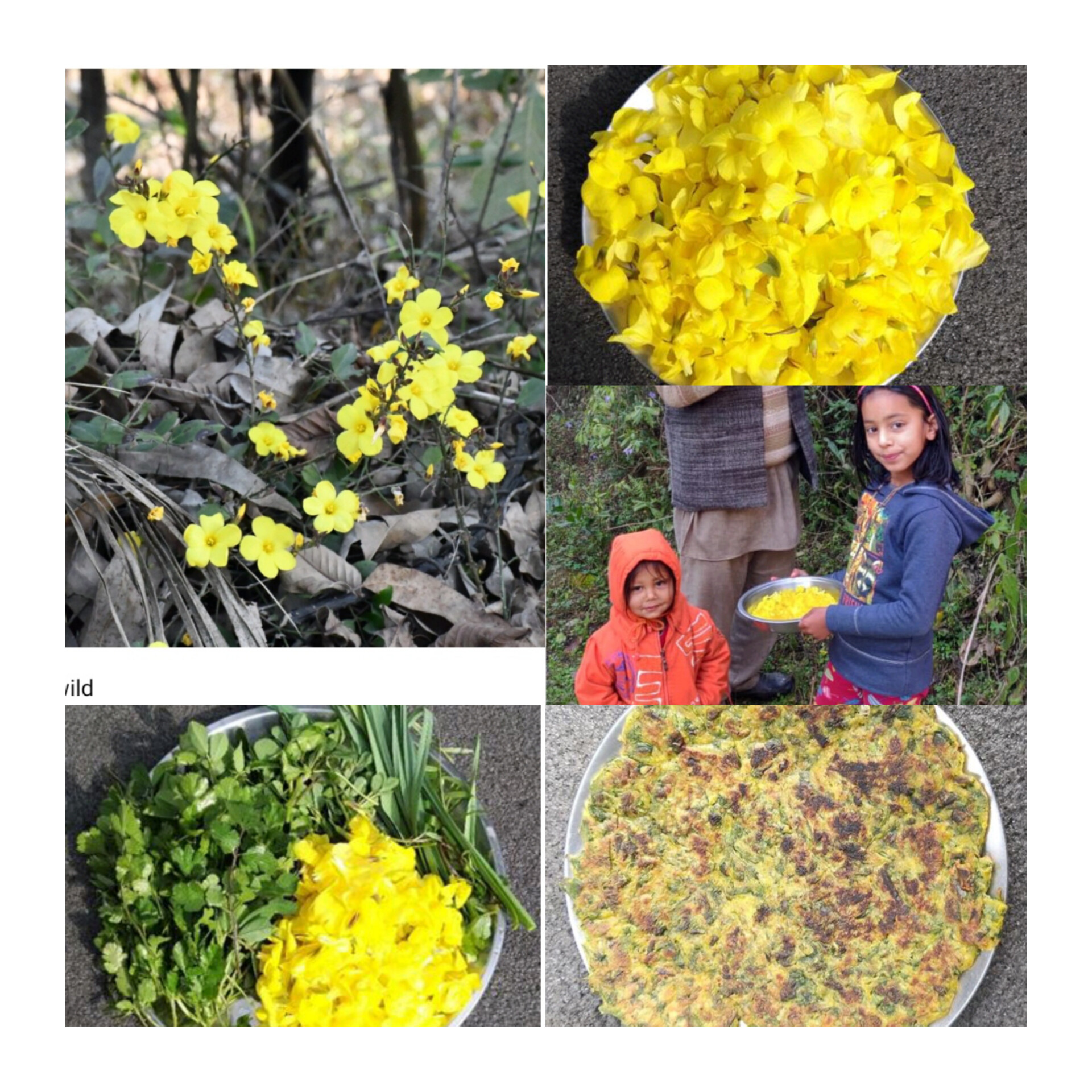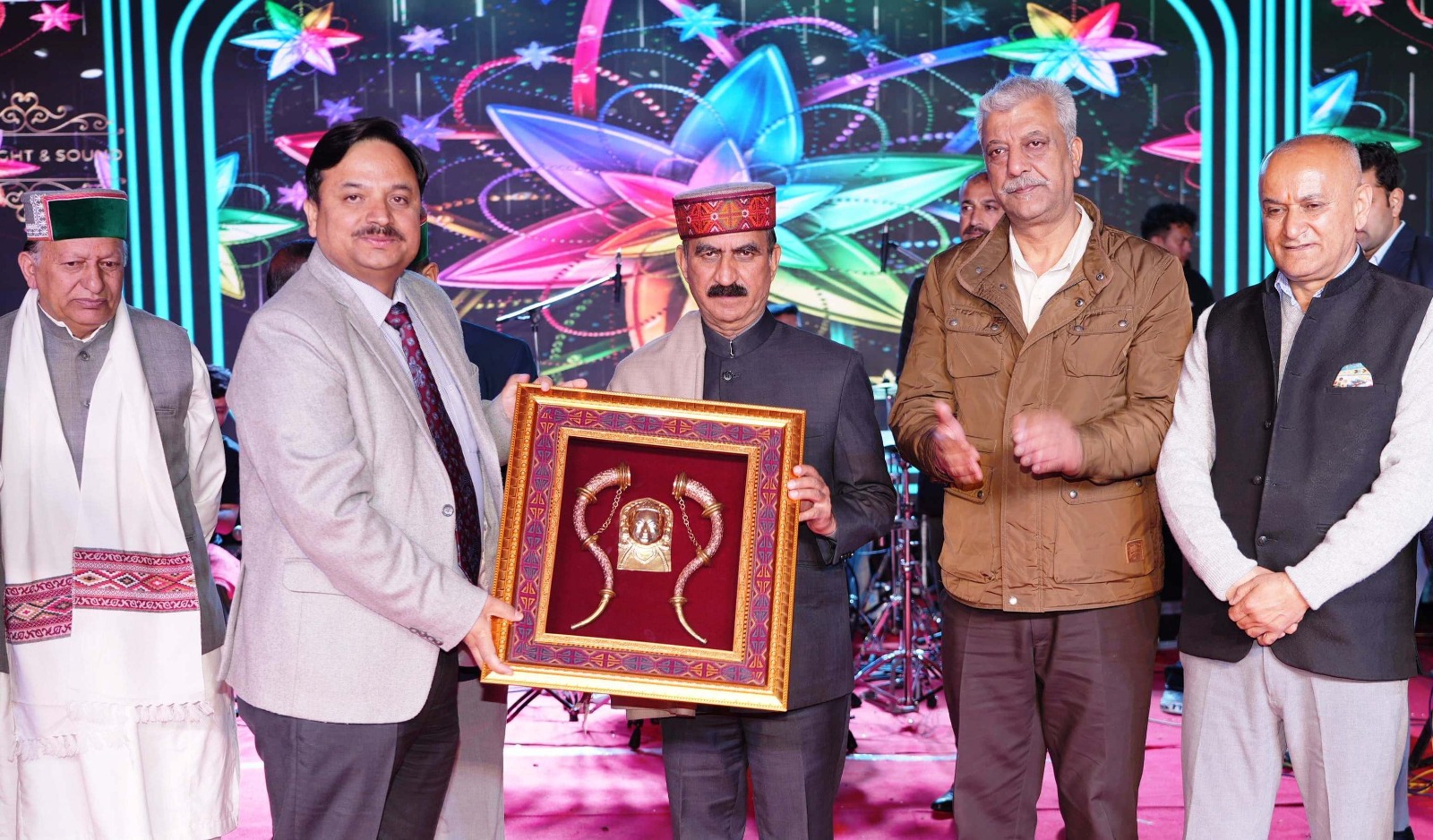Peenyan: The Golden Blossom of Basant Panchami. Dr. Tara Sen.

Shimla:
As winter fades and the golden hues of spring begin to spread, one of nature’s most enchanting gifts graces the Himalayan foothills—the vibrant blooms of Reinwartia indica, commonly known as the Yellow Flax or Basant Phool. Locally known as Peenyan (पींयां), Piyoli, and Basant, this beautiful winter bloomer is a member of the Linaceae family. It is a deciduous shrub that flourishes in forests, mountain slopes, and thickets, often in calcareous habitats, ascending to 1800 m. This delicate yet resilient flower is deeply intertwined with the festival of Basant Panchami, symbolizing the arrival of spring and the onset of rejuvenation in both nature and spirit. In the folklore of Uttarakhand and Nepal, there is a captivating story about the origin of the Peenyan plant, also known as Piyoli in some regions. According to the tale, Piyoli was a stunning forest maiden who lived in the serene forests of the Himalayas, nurtured by the plants, animals, and birds that thrived around her. One day, a prince ventured into the forest on a hunting expedition. Lost in the wilderness, he stumbled upon Piyoli. Mesmerized by her untouched beauty and natural charm, he forgot his quest for game and, taken by her allure, immediately proposed marriage.
Though deeply connected to the forest and its life, Piyoli was hesitant to leave her natural home. However, the prince, with promises of a life of luxury and comfort in his palace on the plains, convinced her. She eventually came to love him dearly, and their wedding was celebrated with grand ceremonies and a magnificent feast.
Yet, despite the opulence of her new life, Piyoli longed for the companionship of the forest creatures, and her heart ached for the natural world she had left behind. Overcome by sorrow, she fell ill and soon passed away. The prince, heartbroken, buried her in the forest she had once called home.
In time, from the very spot where Piyoli was laid to rest, a plant with cheerful yellow flowers sprouted, blooming in vibrant memory of the beautiful maiden. These flowers are called Piyoli, in honor of her, forever linking her spirit to the land she loved so dearly.
Cultural and Religious Importance.

Basant Panchami, dedicated to Goddess Saraswati, is celebrated with great fervor across India. The color yellow, which signifies wisdom, energy, and prosperity, is central to the festival. People wear yellow attire, prepare saffron-infused delicacies, and adorn their homes with yellow flowers. In many Himalayan households, Peenyan is used to decorate temples and prayer areas, reinforcing the spiritual connection between flora and festivities.
In folk traditions, this flower is believed to mark the transition from the harsh winter to the warmth of spring, making it a symbol of hope and renewal. The sight of Peenyan in full bloom is a natural cue for agricultural communities, signaling the time to prepare fields for the upcoming season.
Edible and Medicinal Uses.

Peenyan is not just a visual delight but also a plant with remarkable medicinal benefits. Very few people might be knowing that Peenyan flowers are edible and can be taken as seasonal delicacy. While Peenyan is primarily known for its ornamental value, its flowers are edible and enjoyed in several traditional dishes. A seasonal delicacy, kachru or bhalle, is prepared using fresh Peenyan flowers hugely preferred by children.
Recipe for Peenyan Flower Kachru.

Ingredients:
Fresh flowers – 1 kg
Besan (black gram flour) or corn flour – ½ kg
Fresh coriander leaves (chopped) – 1 cup
Caraway seeds – ½ tablespoon
Green chilies – 3-5 (chopped)
Turmeric powder – ½ tablespoon
Medium-sized onions – 2-3 (chopped)
Salt – to taste
Method:
Make a paste of fresh flowers, besan, and spices.
Heat some oil on a flat pan.
Spread some paste on the pan, shaping it like a chapati.
Cook on both sides for 15 to 20 minutes until golden brown.

Serve hot and repeat the process until all paste is used.
Beyond its culinary uses, Peenyan possesses notable medicinal and edible uses. Its leaves and flowers are used in traditional medicine for pain relief, applied as a poultice to reduce muscle soreness and inflammation. Flowers, along with branches and leaves, are traditionally used in the treatment of paralysis. Crushed stems and leaves help heal wounds, especially those infested with maggots, while a decoction of the leaves is used for gargling to soothe sore throats. Rich in antioxidants like ascorbic acid, Peenyan supports immunity, slows aging, and acts as a natural blood purifier. It is also believed to aid digestion, relieve mild respiratory discomfort, and promote liver health. Additionally, the paste of its flowers is used for skin ailments, helping to soothe burns and rashes. With such a diverse range of benefits, Peenyan is a hidden treasure of Himalayan flora, offering both beauty and healing properties.
The Botanical and Ecological Significance.
Peenyan is primarily a shade-loving plant but can also thrive under bright sunlight. It is commonly found growing under trees or in mixed garden beds, requiring plenty of water and nutrient-rich soil for optimal growth. Apart from its aesthetic appeal, Peenyan plays a vital role in the ecosystem. The nectar-rich flowers attract pollinators such as bees and butterflies, supporting biodiversity. The plant’s fibrous stems are used in making ropes, while its medicinal properties are valued in traditional healing practices.
Other Uses and Conservation.
Peenyan is also cultivated in gardens for its stunning yellow flowers, serving as a beautiful ornamental addition to landscapes. Additionally, a yellow dye is obtained from the flowers, which is used for dyeing clothes and making paints.
Despite its cultural significance, Peenyan is often overlooked in modern urban settings. With increasing deforestation and habitat destruction, the wild populations of this plant are under threat. Conservation efforts, including community awareness and sustainable harvesting practices, are essential to preserving this natural gem.
The golden blossoms of Peenyan stand as a testament to nature’s profound connection with culture and tradition. As we celebrate Basant Panchami, let us acknowledge and cherish this lesser-known yet significant flower that heralds the arrival of spring. By protecting and promoting its growth, we not only preserve an ecological treasure but also keep alive an age-old tradition that links humanity with the rhythms of nature.



